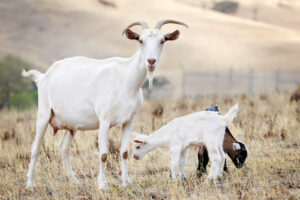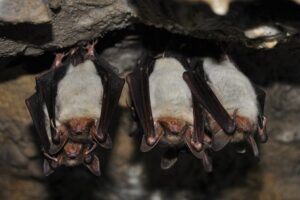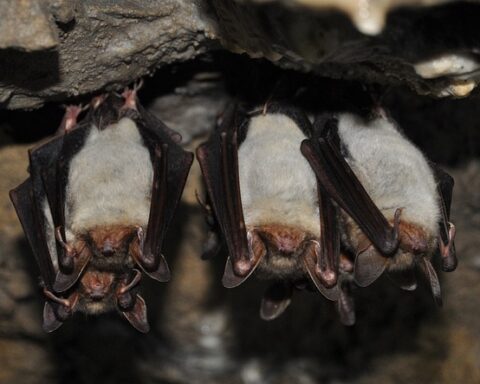Having a horse of your own is a dream come true for equine enthusiasts everywhere. Keeping that horse on your own property is the icing on the cake. You don’t have to travel to the boarding facility, and you have all the time in the world to bond with your horse.
Caring for your horse at home requires a lot of responsibility. You have to arrange for care from the vet and farrier, secure the fences and ensure your horse is fed, watered, and groomed every day.
You want your horse to be healthy, and protecting him from horse flies is very important. In this article, we’ll look at types of biting flies, why they can be dangerous, and the best ways to protect your horse’s health and safety.
Horse Flies and Deer Flies Explained
Horse flies, sometimes called clegs or gadflies, are insects in the Tabanidae family and Diptera order. Horse flies thrive everywhere except the poles, Hawai’i, Greenland, and Iceland. Their bodies can be up to one inch long, and their flight behavior is direct and targeted.
Deer flies, also called sheep flies, are insects in the Chrysops order. Deer flies occupy the same habitats as horse flies. Deer flies are slightly smaller than horse flies, with a body length of one-half to one inch.
Both horse and deer flies feed on pollen, but the females of both species feed on blood during the egg-laying season. Their mouthparts cut into the skin of animals, and anti-coagulants in their saliva prevent the blood from clotting. 
Are Horse Flies Dangerous to Horses?
According to the University of Kentucky, each horse fly can take up to one cc of blood during a meal. If a horse is swarmed by more than 20 flies per day, this would add up to a quart of blood loss over ten days. Anemia, dehydration and vitamin deficiencies are a concern when horses are exposed to swarms of blood-sucking flies.
Horse flies and deer flies also transmit blood-borne diseases. Since they bite numerous animals when feeding, pathogens are spread when the fly bites an infected animal and then bites a healthy one.
Equine infectious anemia is the primary concern in horses. EIA, also called swamp fever or horse malaria, is a virus spread directly by deer and horse flies. There is no vaccine or cure for equine infectious anemia, though a Coggins test detects antibodies.
Sadly, horses that test positive for EIA are often euthanized to prevent the disease from spreading.
Horses are also injured when they try to run away from the painful bites of horse flies and deer flies. When the fly swarm is large, horses will try escaping from the horse fly bites, sometimes running through fences or into roads.
How to Protect Your Horse From Horse Flies
Horse owners throughout the ages have wondered how to get rid of horse flies. Unfortunately, there is no large-scale method for eliminating them. The best way to prevent horse fly bites is to prevent them from coming into contact with your horses:
Use Fly Spray or Other Repellents
Commercial fly sprays containing permethrin or pyrethrin are effective at deterring horse flies and deer flies. While these sprays don’t kill the flies, they do create an unpleasant environment.
Fly spray must be applied often, especially if the horse is sweating. Spray your horse’s entire body, paying special attention to his legs and belly. If your horse doesn’t like spray, you can apply it with a cloth.
DEET is ineffective against these flies, but some horse owners find tea tree oil offers relief.
Stable Your Horses During the Day
Both horse flies and deer flies are active during daylight hours. If you can keep your horses inside the barn during this time and turn them out at night, they can avoid the bites.
If your horses rely on pasture as their primary food source, you should speak with your vet before trying this method. Grass loses some of its sugars and nutrients without direct sunlight. Horses with specific dietary needs may not benefit from nighttime turnout.
Provide Adequate Shade
If your horses must be outside during daylight hours, be sure they have plenty of shade. Both horse flies and deer flies prefer feeding in bright light and usually avoid heavily shaded areas.
Nicely shaded areas will also keep your horse cool. This will help prevent sweating which dilutes the fly spray.
Remove Standing Water
Standing water sources attract deer flies and horse flies. They both lay their eggs in shallow, still water, so keeping these water sources away from your barn may reduce the number of flies in the area.
Removing standing water also cuts down on mosquitoes, which can transmit the West Nile virus and equine encephalitis.
Use Fly Traps
There are a number of horse fly traps on the market. They work by using dark colors and heat to attract the female flies. Once the fly lands on the heat source and finds no blood, they fly into the trap portion and get stuck.
Fly traps aren’t always 100% successful, but they are a great secondary source of protection.
Protect Your Horse With Fly Sheets and Masks
The best way to protect your horses from painful fly bites is by using fly sheets and masks. By wearing these pieces of horse clothing, your horse can move freely around the pasture or paddock while their skin is protected.
Scientists have discovered that zebra’s stripes likely evolved as a natural fly deterrent. The contrasting colors confuse the flies, making them unsure where to land. Domestic horses can have that same benefit by wearing a zebra-patterned fly sheet and mask.
Shop the Horseware sale and give your horse a new look and superior fly protection.
Keep Your Horses Happy and Healthy
As horse owners, we strive to keep our equine friends happy and healthy. Seeing them agitated and in pain due to dangerous horse flies is frustrating.
Use these tips to protect your horses and your stable area from horse flies and deer flies. Your horse will thank you.
If you enjoyed reading this article, check out the rest of our website for more informative content.










